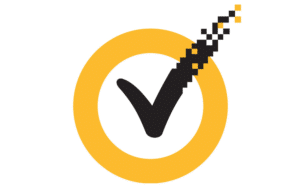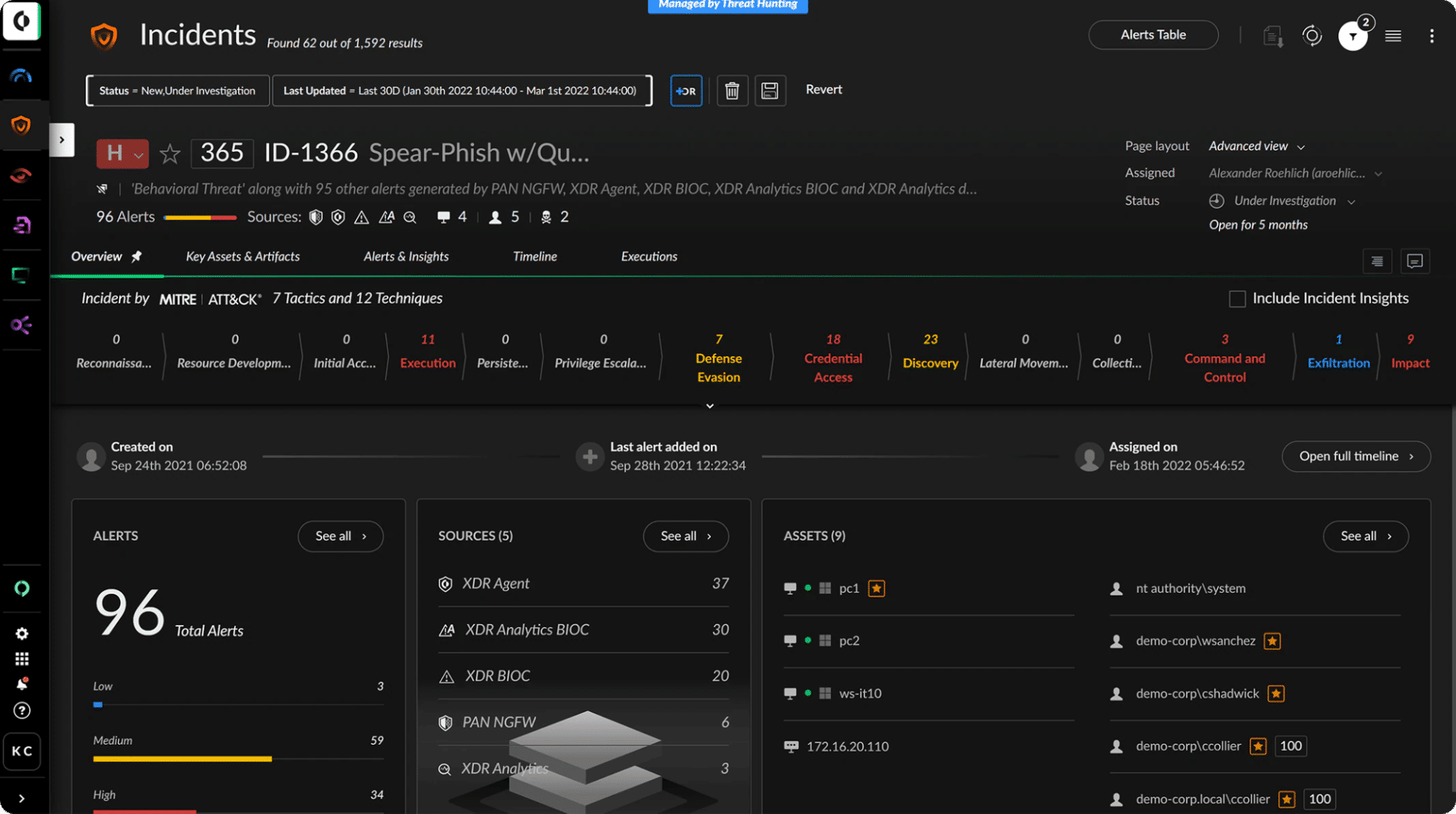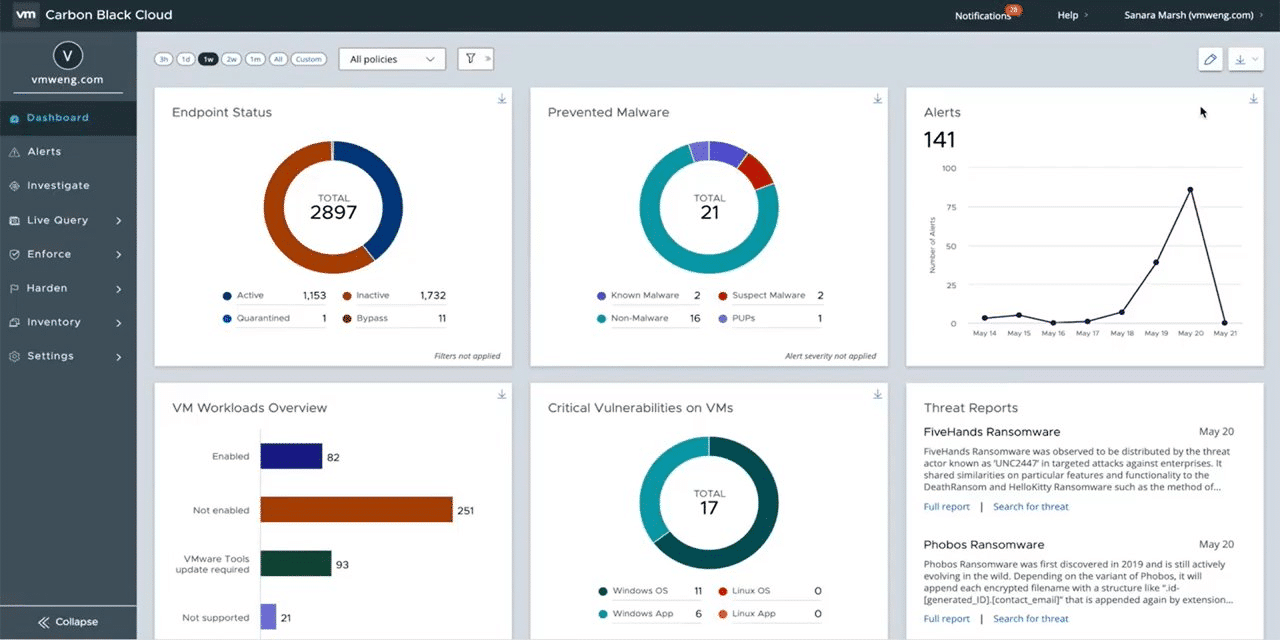In this article
- Top CrowdStrike Competitors and Alternatives: At a Glance
- Why Should Businesses Explore Alternatives to Crowdstrike for Their Cybersecurity Needs?
- Crowdstrike Pricing
- CrowdStrike Deployment Issues
- Crowdstrike False Positives
- Limited Crowdstrike Support for Legacy Systems
- Top 5 CrowdStrike Competitors and Alternatives
- Cynet
Top 5 Crowdstrike Competitors and Alternatives
CrowdStrike is a cybersecurity technology company that provides cloud-based endpoint security. Its software platform prevents, detects, and responds to potential cyber threats. However, CrowdStrike has disadvantages and limitations that might lead some businesses to consider CrowdStrike competitors. In this guide, we’ll explore several solutions you can consider as an alternative to CrowdStrike and when to use each one.
The Crowdstrike alternatives we cover are:
- Cynet
- SentinelOne
- Symantec
- Palo Alto Networks
- CarbonBlack
Top CrowdStrike Competitors and Alternatives: At a Glance
Here’s an overview of CrowdStrike competitors reviewed in this article:
| Strengths | Drawbacks | Best for | |
| Cynet | Full endpoint and network protection, easy to use, robust protection validated by MITRE | Focuses on SMEs and MSPs and not enterprises. | MSPs, MSSPs, resellers, SMEs |
| CrowdStrike | Advanced security, built for the enterprise, visibility and monitoring | Complicated deployment, high pricing, false positives, limited support for legacy systems | Large enterprises |
| SentinelOne | Easy to deploy and use, deep visibility, automated responses | Security shortcomings, limited support | Large enterprises |
| Symantec | Supports complex IT environments, offers advanced threat intelligence network | Bundled in Broadcom services, competes with Broadcom solution Carbon Black | Large enterprises, Broadcom users |
| Palo Alto Networks | Unified security, supports complex IT environments and regulated industries, advanced threat prevention and detection | Alert confusion, user experience challenges | Large enterprises |
| Carbon Black | Threat hunting, predictive security cloud | Bundled in Broadcom services, competes with Broadcom solution Symantec | Large enterprises, Broadcom users |
Why Should Businesses Explore Alternatives to Crowdstrike for Their Cybersecurity Needs?
Organizations evaluating CrowdStrike might discover drawbacks like high subscription-based pricing, which may be too costly for small to mid-sized businesses; a complex deployment process that requires technical expertise and agent installation on all devices; frequent false positives that can create significant noise for security teams; and limited compatibility with legacy systems, which can lead to operational disruptions and inefficiencies.
Crowdstrike Pricing
Crowdstrike pricing is one of the most significant drawbacks of the system. It comes with a hefty price tag that not all businesses can afford. Small and medium-sized businesses, in particular, may find CrowdStrike’s cost prohibitive.
Furthermore, CrowdStrike operates on a subscription-based pricing model, which can be quite expensive in the long run, compared to fixed price licensing models. While this model offers flexibility, it might not be the most cost-effective choice for companies with a tight budget.
CrowdStrike Deployment Issues
The initial setup and configuration of the CrowdStrike platform can be quite complex, requiring a certain level of technical expertise. This Crowdstrike deployment complexity can pose a challenge for businesses without a dedicated IT department or those with limited technical resources.
Additionally, although CrowdStrike is a cloud-based platform, it does require a small agent to be installed on all protected devices. This process can be time-consuming and cumbersome, especially for larger organizations with numerous endpoints.
Crowdstrike False Positives
Crowdstrike false positives are another significant issue. The platform sometimes flags benign activities as malicious, leading to unnecessary alerts and causing potential disruptions.
For businesses, these false positives can be more than just a minor annoyance. They can lead to wasted time and resources as teams scramble to address threats that don’t actually exist. Furthermore, a high number of false positives can cause alert fatigue, potentially leading to real threats being overlooked.
Limited Crowdstrike Support for Legacy Systems
CrowdStrike has limited support for legacy systems. In other words, CrowdStrike’s technology doesn’t always play well with older operating systems that some businesses may still be using.
This lack of compatibility can be a significant drawback for organizations that rely on legacy operating systems for critical operations. These companies might find that CrowdStrike’s platform is not compatible with their existing infrastructure.
Top 5 CrowdStrike Competitors and Alternatives
Cynet
Cynet provides a holistic security solution that protects against threats to endpoint security and across your network. Cynet includes tools you can use to centrally manage endpoint security across the enterprise. With Cynet, you can proactively monitor entire internal environments, including endpoints, network, files, and hosts. This can help you reduce attack surfaces and the likelihood of multiple attacks.
What are Cynet’s Key Features?
Cynet provides the following edge EDR capabilities:
- Advanced endpoint threat detection—full visibility and predicts how an attacker might operate, based on continuous monitoring of endpoints and behavioral analysis.
- Investigation and validation—search and review historic or current incident data on endpoints, investigate threats, and validate alerts. This allows you to confirm the threat before responding to it, reducing dwell-time and performing faster remediation.
- Rapid deployment and response—deploy across thousands of endpoints within two hours. You can then use it to perform automatic or manual remediation of threats on the endpoints, disrupt malicious activity and minimize damage caused by attacks.
In addition, Cynet provides the following endpoint protection capabilities:
- NGAV—providing automated prevention and termination of malware, exploits, Macros, LOLBins, and malicious scripts with machine learning based analysis.
- User Behavioral Analytics (UBA)—detecting and preventing attacks using compromised credentials through the use of behavioral baselines and signatures.
- Deception technology—planting fake credentials, files and connections to lure and trap attackers, mitigating damage and providing the opportunity to learn from attacker activity.
- Monitoring and control—providing asset management, vulnerability assessments and application control with continuous monitoring and log collection.
- Response orchestration—providing manual and automated remediation for files, users, hosts and networks customized with user-created scripts.
What is Cynet’s Pricing?
Cynet offers organizations two main types of packages:
- Elite – XDR platform with 24X7 MDR support, at $7/month/endpoint.
- All-in-One – Full enterprise security platform with 24X7 MDR support, at $10/month/endpoint.
Both packages include platform management, advanced EPP, EDR, UBA, NDR, Response Orchestration and Deception. The Elite package includes optional MDT, SSPM and CSPM, log management and open XDR, and MDR services.
The enterprise package includes everything in the elite package, including all optional services, as well as ESPM and email security.
Who is Cynet Best for?
Cynet combines an all-in-one XDR platform with proactive monitoring from 24X7 MDR services, in an affordable solution that’s straightforward to deploy and easy to manage. This makes Cynet ideal for small and medium-sized enterprises. These organizations need high-level security but don’t have enterprise security budgets or a large department of experienced security professionals to manage multiple security solutions.
MSPs, MSSPs and resellers rely on Cynet to provide their clients with advanced security in a consolidated platform. This allows them to work with a wide range of clients with diverse technological environments and regulatory requirements, while ensuring high-quality protection.
Why Do Companies Choose Cynet over CrowdStrike for Endpoint Security Solutions?
Cynet’s holistic security system addresses the challenges business encounter with CrowdStike.
- Pricing – Cynet’s pricing structure is more budget-friendly, particularly for small and medium-sized organizations, without compromising on the quality of security.
- Effectiveness – Cynet outperformed Crowdstrike in the 2023 MITRE ATT&CK Evaluation for endpoint solutions (Crowdstrike did not participate in the 2024 MITRE Evaluation).
- Deployment – Cynet offers a more straightforward deployment process, which means businesses without a large IT department don’t have to wrestle with the same level of technical setup or extensive agent installations.
- No Security Noise – Cynet reduces false positives, saving businesses from unnecessary alerts and “alert fatigue.”
- Diverse Infrastructure Compatibility – Cynet works with any infrastructure, offering broader compatibility for both modern and legacy infrastructures.
What are Cynet’s Users Saying About Cynet?
“”A solid choice for EDR and SOC support”
What do you like best about Cynet – All-in-One Cybersecurity Platform?
Effectiveness, low signal to noise ratio, and quick deployment.”
What do you like best about Cynet – All-in-One Cybersecurity Platform?
Cynet is a great tool to protect all endpoints from phishing domain, cryptoloker, ransomware and the ndr component is a beautiful add-on to protect my network from lateral movement.
The dashboard is very baetifull, the console It is very very easy to use, the fix is very good, Cynet automatically blocks malicious events.
Use all day this product for check the state of my endpoints”
Cynet vs. CrowdStrike – Cynet offers a unified and powerful automated XDR platform ideal for lean security teams, while CrowdStrike delivers a solution for large enterprises with complex operations and a focus on endpoint security.
SentinelOne
SentinelOne is a cybersecurity vendor that primarily focuses on endpoint protection.
What are SentinelOne’s Key Features?
SentinelOne’s platform uses artificial intelligence and machine learning to detect and respond to threats, allowing it to identify threats that traditional antivirus solutions might miss.
Source: SentinelOne
SentinelOne also provides automated response capabilities. It can quickly neutralize threats, minimizing the potential damage. This automation also reduces the workload on IT teams.
SentinelOne provides a deep visibility feature, which provides a detailed view of the threats an organization faces, allowing teams to make informed decisions about their security strategy. This level of insight can be particularly useful in identifying emerging threats and planning proactive measures to counter them.
What is SentinelOne’s Pricing?
SentinelOne offers five pricing packages:
-
- Core – Cloud-native NGAV for $69.99/endpoint.
- Control – Security and suite features for $79.99/endpoint.
- Compete – AI-powered endpoint and cloud security for $179.99/endpoint.
- Commercial – Foundational AI security for $229.99/endpoint.
- Enterprise – Pricing not specified.
(Prices are for 5-100 workstations)
The basic plan includes EPP and platform management. Advanced plans add capabilities like advanced EPP, CWPP, EDR, data retention, identity threat detection and response and more.
Who is SentinelOne Best for?
SentinelOne is generally best for mid-sized businesses up to large enterprises that prefer an all-in-one platform over juggling multiple tasks. Small businesses or organizations with simpler networks might find SentinelOne more robust than they truly need.
Why Do Companies Choose SentinelOne over CrowdStrike for Endpoint Security Solutions?
Both SentinelOne and CrowdStrike offer endpoint security solutions for the enterprise. However, users tend to favor SentinelOne for pricing reasons, since CrowdStrike requires a much heavier budget. In addition, managing policies and rolling out updates are reported to be easier with SentinelOne. Read more about the differences between SentinelOne and CrowdStrike.
What are SentinelOne’s Users Saying About SentinelOne?
“We have been using SentinelOne Singularity from the last 3 years for Advanced threat detection, automatic remediation of the latest threats emerging in our environment, automatic updation and upgradation of the agents, monitoring and visibility of all the activities in the endpoints, and complete coverage on all the endpoints.
Although product is good but problems i faced with the support as they won’t come on call easily and keep wasting time on emails and always keep asking to fetch logs.”
“What do you like best about SentinelOne Singularity?
S1 is very lightweight and easy to use to console. Updates to agent takes very less time as compared to other products we use earlier.”
SentinelOne vs CrowdStrike – SentinelOne offers more flexible pricing and easier policy management, while CrowdStrike seems to deliver more robust security.
Learn more in our detailed guide to SentinelOne vs CrowdStrike (coming soon)
Symantec
Symantec, now a division of Broadcom, is a threat and data protection solution for the enterprise.
Symantec Key Features
Symantec offers a range of cybersecurity solutions, including endpoint protection, cloud security, and threat intelligence.
Source: Broadcom
One of Symantec’s strengths is its threat intelligence network. With its global reach, Symantec can gather and analyze threat data from various sources, providing businesses with insights into the threat landscape. This intelligence can be used to inform security strategies and counter emerging threats.
Symantec’s endpoint protection solution takes a multi-layered approach, protecting against threats including malware, ransomware, and zero-day attacks. With its integrated threat response feature, Symantec can automatically respond to threats.
What is Symantec’s Pricing?
Symantec was acquired by Broadcom and is offered for purchase through Broadcom’s through an extensive network of authorized distributors, value-added resellers (VARs) and global partners. As a result, pricing is not listed publicly and can vary significantly depending on the region, the specific product suite, licensing terms and any enterprise agreements or bundles negotiated through the local Broadcom partner.
Who is Symantec Best for?
Symantec is best suited for large enterprises and complex IT environments that require deep, layered cybersecurity across endpoints, networks, and cloud workloads. It’s well suited to highly regulated industries like finance, healthcare, and government. The platform integrates well with other Broadcom tools, making it easier to work with for companies already in that ecosystem. However, it’s less ideal for small to mid-sized businesses, as it can be costly and complex to deploy.
Why Do Companies Choose Symantec Over CrowdStrike for Endpoint Security Solutions?
Enterprises may choose Symantec over CrowdStrike for endpoint security for the following reasons:
- On-prem deployment – CrowdStrike is cloud-native, offering flexibility, scalability and automation. However, some organizations prefer, or are required to implement, on-prem or hybrid deployments, which Symantec supports.
- Bundled pricing via Broadcom – Symantec, now part of Broadcom, is often sold as part of bundled enterprise deals that include networking or other Broadcom products. This bundling can make it more cost-effective for Broadcom-aligned enterprises.
What Symatec Users Are Saying About Symantec
“Helped to maintain security with low resources usage and easy deploy over the organization.”
“”Most dependable security to my frontlines”
What do you like best about Symantec End-user Endpoint Security?
I have been using Symantec for the last 3-4 months, and I have found a few positive points, including antivirus, firewall, and web security. It’s providing me with a real-time monitoring feature as well.
Customer support is good, and I have integrated this with my other apps. No problem such as now.
What do you dislike about Symantec End-user Endpoint Security?
Nothing such as I found till now. Everything is going well and in right direction”
Symantec vs CrowdStrike – Symantec is suited for large enterprises, especially those using the Broadcom ecosystem and in need of on-premises deployment, while CrowdStrike is a standalone, cloud-native product.
Palo Alto Networks
Palo Alto Networks offers a range of cybersecurity solutions. Known for its next-generation firewalls (NGFW), Palo Alto Networks solutions cover network security, cloud security, and endpoint protection.
Source: Palo Alto Networks
Palo Alto Key Features
A key feature of Palo Alto solutions is threat prevention. With its cloud-based threat intelligence, Palo Alto Networks can identify and block known and unknown threats. Palo Alto solutions also provide automated response capabilities.
Palo Alto Networks’ platform also offers advanced threat detection. By analyzing network traffic and behavior patterns, Palo Alto Networks can identify unusual activities that may indicate a threat. This proactive approach can address potential threats before they can cause significant damage.
What is Palo Alto Networks’ Pricing?
Palo Alto pricing can vary per enterprise architecture, reselling agreements, solution bundles, and other criteria. For those purchasing Palo Alto’s endpoint solution through the AWS marketplace, pricing is as follows:
- Cortex XDR Prevent – 200 seats at $16,000/year
- Cortex XDR Pro – 200 endpoints and 30 days of data retention at $14,000/year
Who is Palo Alto Networks Best for?
Palo Alto Networks is best suited for large enterprises that need scalable and robust security across complex architectures or that have high compliance requirements and have the budget and tram to support it. In addition, it’s a good fit for enterprises with a desire to consolidate solutions and use solely Palo Alto Networks as a vendor for endpoint, cloud, and network security needs.
Why Do Companies Choose Palo Alto Networks over CrowdStrike for Endpoint Security Solutions?
Companies often choose Palo Alto Networks over CrowdStrike for endpoint security when they’re looking to integrate endpoint security into their broader security ecosystem. Palo Alto is known for its next-gen firewalls and network security infrastructure. Their Cortex XDR solution integrates well in environments already running these Palo Alto solutions. In addition, consolidating to a single vendor allows enterprises to gain better visibility across network, endpoint, and cloud.
What Palo Alto Users Are Saying About Palo Alto
What do you like best about Cortex XDR?
Easy to setup the endopoint to customers and realtime alerting
What do you dislike about Cortex XDR?
Somitimes the alerts arent right. For example cortex thinks tha outlook is a malware”
““Cortex is technically very sound and good product as per cyber security point of view.”
What do you like best about Cortex XDR?
Cortex updates about latest definiations as per cyber attacks trends. Also knowledge base documents are very good.
What do you dislike about Cortex XDR?
Not user friendly. For ease- of- use a person needs to work. Customer support is not good.”
Palo Alto Networks vs CrowdStrike – Both solutions provide robust and advanced security and enterprise-readiness. Palo Alto comes with a wide-range of additional security products that integrate together.
Carbon Black
Carbon Black offers a cloud-native security platform with a special focus on endpoint protection. Carbon Black was acquired by VMWare. When VMWare was acquired by Broadcom, Carbon Black became a Broadcom security offering.
Source: VMware
Carbon Black Key Features
One of Carbon Black’s key strengths is its predictive security cloud. This cloud-based platform uses machine learning to predict and prevent advanced threats. With its continuous monitoring capabilities, Carbon Black can detect and respond to threats in real-time.
Carbon Black’s platform also supports threat hunting. It provides analytics and threat intelligence capabilities that allows security professionals to proactively search for potential threats.
What is Carbon Black’s Pricing?
A Broadcom product, Carbon Black is now offered through Broadcom’s resellers and partners, like Symantec. As mentioned, pricing is not typically listed publicly and can vary significantly depending on the region, the specific product suite, licensing terms, and any enterprise agreements or bundles negotiated through the local Broadcom partner.
Who is Carbon Black Best for?
Just like Symantec, Carbon Black is best suited for large enterprises and complex IT environments. The platform integrates well with other Broadcom tools, making it a preferred choice for companies already in that ecosystem. However, it’s less ideal for small to mid-sized businesses, as it can be costly and complex to deploy.
Why Do Companies Choose Carbon Black Over CrowdStrike for Endpoint Security Solutions?
When it comes to deciding which endpoint security solution to choose, CarbonBlack or Crowdstrike, enterprises might choose CarbonBlack due to the following:
- Carbon Black offers cloud, hybrid, and on-premises deployment options, while CrowdStrike is a cloud solution. This is preferable for regulated industries or organizations with data residency requirements.
- Carbon Black integrates with VMWare and Broadcom tools, which is helpful for organizations using them.
- Carbon Black provides high-fidelity, granular data for endpoint security monitoring and incident response.
What Carbon Black Users are Saying About Carbon Black
“”Carbon Black is a simple and easy to use. The interface of Carbon Black might be one of the easiest interfaces to use, which helps if you have a small team or one that is inexperienced in the world of EDR. A drawback of Carbon Black includes the lack of automated sensor policies. To upgrade the sensors, one would have to manually initiate the upgrades, which can be time consuming.”
“VMware Carbon Black Cloud provides continuous monitoring and detailed insights into endpoint activity for effective threat investigation. It reduces on premises infrastructure requirements as it operates on cloud.”
Carbon Black vs CrowdStrike – Like Symantec, Carbon Black is suited for large enterprises, especially those using the Broadcom ecosystem and in need of on-premises deployment, while CrowdStrike is cloud-native and a product of its own.
Cynet: Ultimate CrowdStrike Alternative
Cynet is a security solution that includes a complete Endpoint Protection Platform (EPP) with built-in EDR security, a Next-Generation Antivirus (NGAV), and automated incident response (SOAR). Cynet makes it easier to adopt a modern security toolset by offering an “all in one” security model: Cynet 360 goes beyond endpoint protection, offering network analytics, UEBA, and deception technology.
Cynet’s platform includes:
- NGAV—blocks malware, exploits, LOLBins, Macros, malicious scripts, and other known and unknown malicious payloads.
- Zero-day protection—uses User and Entity Behavior Analytics (UEBA) to detect suspicious activity and block unknown threats.
- Monitoring and control—asset management, endpoint vulnerability assessments and application control, with auditing, logging and monitoring.
- Response orchestration—automated playbooks and remote manual action for remediating endpoints, networks and user accounts affected by an attack.
- Deception technology—lures attackers to a supposedly vulnerable honeypot, mitigating damage and gathering useful intelligence about attack techniques.
- Network analytics—identifying lateral movement, suspicious connections, and unusual logins.
Learn more about Cynet’s All-in-One cybersecurity platform.
Related Posts
Looking for a powerful, cost effective XDR solution?
- Full-Featured XDR, EDR, and NGAV
- Anti-Ransomware & Threat Hunting
- 24×7 Managed Detection and Response











